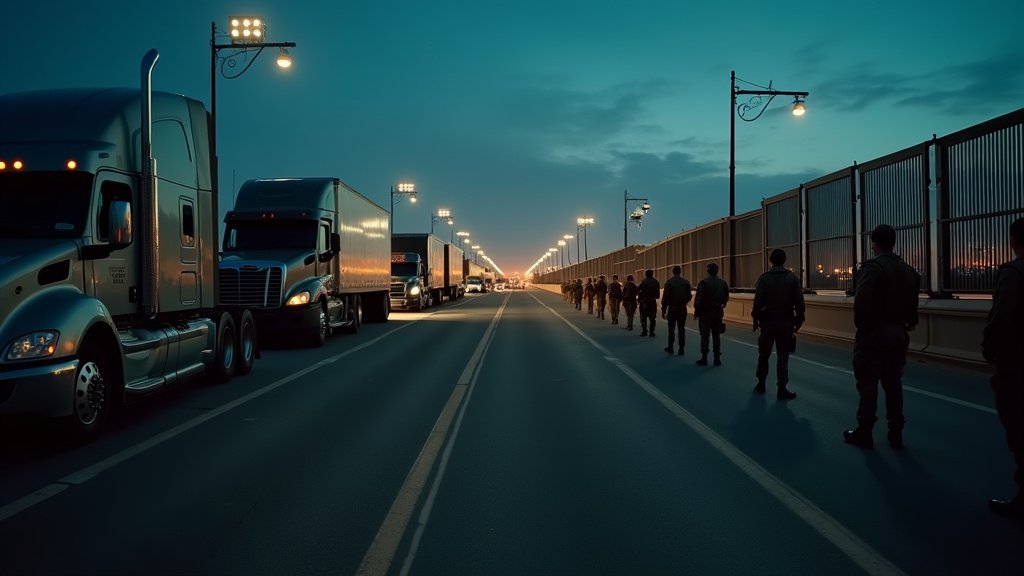San Diego, California – U.S. Customs and Border Protection (CBP) agents have announced the discovery and closure of a remarkably sophisticated underground tunnel spanning nearly 3,000 feet beneath the international boundary connecting San Diego, California, and Tijuana, Mexico. The elaborate subterranean passage, located in close proximity to the bustling Otay Mesa Port of Entry, represents one of the longest and most complex smuggling tunnels ever found along the U.S.-Mexico border.
Officials revealed the discovery on or around Thursday, June 19 or 20, 2025, detailing a passage engineered with features indicative of high-level planning and significant investment by transnational criminal organizations. The tunnel’s sheer length underscores the persistent and evolving challenge faced by law enforcement agencies tasked with securing the border.
Anatomy of the Discovery
According to a release issued by CBP, the clandestine tunnel extended an impressive distance, stretching nearly 3,000 feet in total. Its path took it from an entry point cunningly concealed within a residential area in Tijuana, Baja California, deep beneath the border infrastructure, before resurfacing more than 1,000 feet inside U.S. territory. The American exit point was situated near a commercial warehouse in the San Diego area, a location strategically chosen for its proximity to major transportation routes and the potential ease of moving illicit goods or people undetected.
The tunnel’s entrance in Tijuana was reportedly hidden behind freshly laid tile, a simple yet effective method of camouflage designed to escape casual observation. This detail highlights the smugglers’ meticulous efforts to maintain secrecy and integrate their operations into everyday life.
Engineering Sophistication
What sets this discovery apart is the advanced level of engineering employed in the tunnel’s construction. CBP’s release explicitly noted that the passage was equipped with a suite of sophisticated features rarely seen together in such operations. These included electrical wiring providing power, a comprehensive lighting system illuminating the subterranean route, and crucial ventilation systems to ensure air circulation over its considerable length.
Perhaps most significantly, the tunnel incorporated a track system. This feature is particularly telling, indicating the builders’ intent to use the tunnel for the efficient and high-volume transport of contraband. Such a system would allow for the rapid movement of large quantities of narcotics, weapons, or even people, bypassing official ports of entry and traditional surveillance methods. The presence of these integrated systems suggests a well-funded and highly organized effort, far beyond the capabilities of smaller-scale operations.
A Recurring Challenge: The Tunnel Threat
This latest discovery is not an isolated incident but rather the latest in a long series of tunnels that have plagued the U.S.-Mexico border for decades. Drug cartels and human smuggling networks have historically utilized these underground pathways as a primary method to circumvent increased border security measures, including walls, fences, and patrols.
The area surrounding San Diego has historically been a hotspot for tunnel activity due to its dense urban interface with Tijuana and the complex topography. CBP data underscores the scale of this challenge, revealing that the agency has discovered over 95 tunnels in the San Diego area alone since 1993. This statistic illustrates the persistent nature of the threat and the continuous game of cat and mouse played between smugglers and border authorities.
Tunnel construction requires significant technical expertise, resources, and time, indicating that those involved are often sophisticated criminal enterprises capable of mounting complex engineering projects. The tunnels vary widely in depth, length, and sophistication, ranging from rudimentary shafts to highly engineered passages like the one recently discovered.
Law Enforcement Response and Closure
Following the discovery, U.S. authorities quickly moved to neutralize the threat posed by the tunnel. CBP announced that contractors are scheduled to pour thousands of gallons of concrete into the passage. This standard procedure for discovered tunnels is essential to ensure they cannot be reopened or reused by criminal organizations for future illicit activities.
The operational details of the tunnel’s detection were not immediately released, though discoveries often result from intelligence gathering, collaborative efforts between U.S. and Mexican authorities, or technological surveillance methods. The successful identification and closure of a tunnel of this complexity represent a significant disruption to the operations of the criminal group responsible.
Broader Implications
The uncovering of such a lengthy and well-equipped tunnel highlights the ingenuity and resources that criminal organizations are willing to expend to traffic illicit goods and people into the United States. While border security efforts often focus on surface and aerial surveillance, the persistent use of tunnels demonstrates the subterranean dimension of the challenge.
The nearly 3,000-foot tunnel serves as a stark reminder that border security is a multifaceted issue requiring continuous adaptation and investment in technology, intelligence, and cross-border cooperation. Each tunnel discovery provides valuable intelligence on smuggling methods, aiding authorities in developing counter-strategies. However, as long as demand for illicit goods and the potential for profit remain high, criminal groups are likely to continue exploring innovative, albeit risky, methods to breach the border.
The closure of this tunnel near the Otay Mesa Port of Entry mitigates an immediate threat but also signals the ongoing need for vigilance and robust security measures along the entire U.S.-Mexico frontier.






